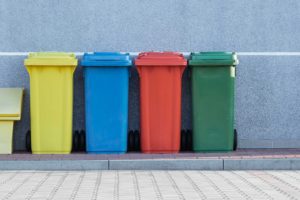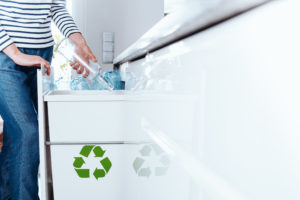
Blog
Moving Forward for a Sustainable Future
The consumer packaged goods industry is constantly striving for sustainability. Whether through fully recyclable or reusable packaging, responsible ingredient sourcing, reducing carbon emissions or a host of other goals, the CPG industry is innovating for the future. Michael Okoroafor, vice president, global sustainability and packaging innovation for McCormick & Company, and Ann Tracy, chief sustainability officer for Colgate-Palmolive, are at the forefront of this movement, and joined CPG Speaks to discuss how the industry can continually improve together — and influence other industries to do the same — for the benefit of our planet.
Doing Well by Doing Good
For businesses today, being environmentally conscious can no longer be an afterthought. CPG companies have made sustainability a key priority for their core business and made it clear that meeting these aggressive targets is not only good for the planet, but good for all stakeholders.
“The era of shareholder only is over,” said Okoroafor. “We are linking financial performance to how we treat people, how we deal with communities where we live, work and source and how we address issues around the planet.”
Earlier this year, McCormick released an update on its sustainability goals through its 2019 Purpose-led Performance Progress Report, including making significant progress toward 100 percent sustainable sourcing for its iconic ingredients and achieving 84 percent plastic packaging that can be reused, recycled or repurposed by 2025. The company is also making plans for all Maryland and New Jersey facilities to be completely powered with renewable electricity by 2022.
“The era of shareholder only is over. We are linking financial performance to how we treat people, how we deal with communities where we live, work and source and how we address issues around the planet.”
Colgate-Palmolive is setting targets as it reimagines a healthier future for people, their pets and our planet. These environmental and socially responsible targets include: 100 percent zero-waste facilities, eliminating a third of new plastics, net zero carbon emissions, taking care of employees through holistic well-being and reaching two billion children in vulnerable communities to improve their oral care.
“Colgate-Palmolive is meeting or exceeding our 2020 targets, and we have raised the bar for 2025,” said Tracy. “We’re on a mission to build purpose-driven brands.”
Change Starts at Home
Despite CPG’s high-level environmental targets, meeting or exceeding these goals might not make as big of an impact as the industry hopes, unless consumers change their behavior as well. Research from Colgate-Palmolive found that the majority of the environmental footprint associated with their products happens after the consumer takes them home.
“Ninety percent of the environmental footprint happens when you turn on the tap to brush your teeth, take your shower or clean your house,” said Tracy. “That’s why we are committing to help people build more sustainable habits, like promoting water conservation awareness.”
Research from Consumer Brands echoes a similar sentiment — only four percent of Americans believe that recycling is not confusing and 75 percent say that allowing recycling systems to set different standards on what can be recycled creates confusion — a sobering statistic that could greatly hamper progress in reducing plastic and packaging waste and creating a circular economy.
“Without consumer education, people don’t know how to recycle,” Okoroafor said. “We have to work together to ensure that we bring the government, our communities and our states as part of this. That is how we accomplish this.”
Through new innovations in packaging, from reducing the amount of plastic used to introducing reusable or refillable products, CPG is finding new ways to decrease waste without relying on a confusing and broken recycling system.
“It’s going beyond the recyclable and compostable and looking at whole new ways to deliver the product,” said Tracy.
Collaboration Drives Competition
To make a real impact on our environment, every stakeholder must get involved and be open to collaboration, even with direct competitors. When Colgate discovered how to make a fully recyclable toothpaste tube — a feat that took five years to develop — the company decided to make its breakthrough discovery available to other toothpaste manufacturers for the benefit of the environment.
“There’s a lot of work to do out there, but you have to focus on where you have the biggest impact.”
“There’s a lot of work to do out there, but you have to focus on where you have the biggest impact,” said Tracy. “We’ve chosen to openly share this technology because we want to help speed industry’s sustainability transformation and reduce plastic waste.”
Like Colgate-Palmolive, McCormick recognizes the critical need for cooperation across competitors and has decided to “collaborate to compete,” to achieve lofty sustainability targets by 2025 and beyond.
“You really need to collaborate in this area, even with your competitors,” said Okoroafor. “If you come up with a new way to make completely sustainable plastics but you don’t have the scale to bring it to a cost-effective level, it doesn’t go anywhere. At the end of the day, the consumers want to pay for value and having collaboration gives you the scale to deliver.”
Visit our website to learn more about CPG Speaks and to register for an upcoming session. CPG Speaks is complimentary for attendees, thanks to PwC and individual session sponsors. View this session in full here.
Published on September 10, 2020




